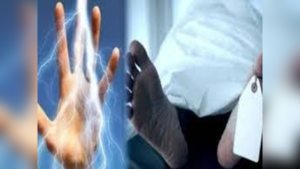choices symbols how our today
How Symbols Influence Our Choices Today
Symbols are pervasive elements in our daily lives, subtly guiding our perceptions, attitudes, and decisions. From the flags fluttering on government buildings to the logos on our smartphones, symbols serve as powerful carriers of meaning that shape human behavior on both conscious and subconscious levels. Understanding how these symbols operate is crucial to recognizing their influence in our personal choices and societal interactions.
This article explores the multifaceted role of symbols, examining psychological mechanisms, cultural contexts, commercial applications, and modern digital influences. We will illustrate these concepts with practical examples, including insights from the gaming industry, particularly focusing on how symbolic cues in modern slot games, like Le Pharaoh, exemplify these principles in action.
Contents:
- 1. The Power of Symbols in Shaping Human Behavior and Decisions
- 2. The Psychology of Symbols: Brain Responses to Symbolic Cues
- 3. Symbols in Cultural and Social Contexts
- 4. Commercial Symbols and Consumer Behavior
- 5. Symbols in Modern Gaming and Engagement
- 6. Hidden Messages and Subconscious Cues
- 7. Digital Age: Navigating Complex Symbolic Landscapes
- 8. Case Study: “Le Pharaoh” and Modern Symbols in Gaming
- 9. Future Trends and Ethical Considerations
- 10. Conclusion: Recognizing and Navigating Symbolic Power
The Power of Symbols in Shaping Human Behavior and Decisions
a. Defining symbols: What are they and how do they function in everyday life?
Symbols are visual, auditory, or tactile elements that stand for ideas, concepts, or identities. They include flags representing nations, corporate logos signifying brands, religious icons embodying spiritual beliefs, and even colors that evoke specific emotions. Functionally, symbols serve as shorthand communication devices, conveying complex meanings efficiently and often instantly recognized across cultures or groups.
b. The influence of symbols on subconscious and conscious decision-making
Research shows that symbols impact us both at conscious levels—such as choosing a product based on brand logos—and below awareness—like feeling more patriotic when seeing a national flag. Subconscious cues can trigger emotional responses, biasing our choices without deliberate reflection, which explains their potency in marketing, politics, and social interactions.
c. Overview of the article’s exploration from general concepts to specific examples
Following this overview, we will delve into the psychological mechanisms behind symbol recognition, examine cultural and social influences, explore commercial applications, analyze how modern gaming employs symbolic cues, and reflect on ethical considerations and future trends shaping our decision landscape.
The Psychology of Symbols: How Our Brain Responds to Symbolic Cues
a. Cognitive mechanisms behind symbol recognition and emotional response
Neuroscientific studies reveal that the brain processes symbols in regions associated with visual recognition and emotional regulation. The fusiform face area, for example, is activated when recognizing familiar symbols like logos or faces, while limbic structures respond to emotionally charged symbols such as national flags or religious icons. These neural pathways enable rapid association and emotional reactions, often influencing behavior before conscious awareness.
b. The role of cultural and personal associations in interpreting symbols
Interpretation of symbols is heavily shaped by cultural context and personal experiences. For instance, a white dove universally symbolizes peace, but its specific connotations may vary—representing purity in some cultures and spirituality in others. Personal memories also color these associations, making symbols uniquely meaningful for each individual, which in turn influences their decisions and attitudes.
c. Impact on choices: from trivial preferences to major life decisions
The emotional and cognitive responses elicited by symbols can sway choices in subtle ways. A consumer might prefer a product with a certain logo due to positive associations, while a political supporter might be more inclined to vote for a candidate whose campaign symbols resonate with their values. Over time, these influences accumulate, affecting significant life choices such as career paths or partner selection.
Symbols in Cultural and Social Contexts: Shaping Identity and Norms
a. Symbols as carriers of cultural values and societal expectations
Flags, religious icons, and national emblems encapsulate collective identities and values. They serve as visual anchors for social cohesion, fostering shared pride or unity. For example, the rainbow flag symbolizes LGBTQ+ pride, promoting acceptance and visibility within communities.
b. How symbols reinforce social cohesion or dissent
Symbols can also act as markers of dissent, challenging societal norms. Protest signs, alternative flags, or subcultural symbols signal opposition or alternative identities. These visual cues facilitate group solidarity and communicate collective stance, influencing social dynamics and group behavior.
c. Examples: flags, logos, religious icons, and their influence on group behavior
Flags foster national pride, logos build brand loyalty, and religious icons inspire spiritual devotion. Their influence extends to group behaviors—national holidays, consumer loyalty, and religious practices—all driven by symbolic meaning. Recognizing these influences helps us understand societal cohesion and dissent mechanisms.
Commercial Symbols and Consumer Behavior: The Power of Branding and Advertising
a. How brands create symbols to evoke trust and loyalty
Brands craft distinctive symbols—logos, mascots, slogans—that evoke specific associations. For example, the golden arches of McDonald’s symbolize familiarity, convenience, and quality. These symbols create mental shortcuts that influence consumer preferences and foster loyalty, often shaping purchasing decisions subconsciously.
b. The psychological impact of visual and auditory cues in marketing
Visual cues like color schemes and logo shapes trigger emotional responses—red evokes excitement, blue signifies trust. Auditory cues, such as jingles or brand sounds, reinforce recognition and emotional bonds. These sensory elements are meticulously designed to guide consumer behavior and enhance brand recall.
size:1.75em; margin-top:30px; margin-bottom:10px; color:#34495e;”>c. Case study: The use of symbols in modern gaming—focusing on how slot symbols influence player choices
In the gaming industry, symbols are central to player engagement and decision-making. Slot games often use specific symbols—such as fruits, numbers, or thematic icons—to evoke anticipation and influence betting behavior. For instance, symbols indicating potential wins or jackpots can subconsciously encourage players to persist or increase their bets, exemplifying how symbolic cues manipulate choices.
Symbols in Modern Gaming: Enhancing Engagement and Decision-Making
a. The design of game symbols to guide player choices and increase engagement
Game developers craft symbols not only for aesthetic appeal but also to subtly influence player behavior. Bright, distinctive symbols are used to highlight potential wins, while recurring visual themes foster familiarity and persistence. These design choices encourage players to continue engaging with the game, often increasing time and money spent.
b. Features of “Le Pharaoh” as a modern illustration
- All 19 paylines always active: Reinforces the perception of constant opportunity, motivating players to bet more.
- Sticky Re-drops and Golden Squares: These symbols serve as symbolic rewards, shaping player expectations about potential gains.
- Audio cues and accessibility features: Enhance user experience and inclusivity, subtly influencing decision-making through sensory engagement.
c. The psychological effect of consistent symbols and cues on player persistence and risk-taking
Repeated exposure to familiar symbols and cues fosters trust and increases the likelihood of continued play. Features like sounds and visual rewards reinforce the perception of winning chances, encouraging players to persist despite losing streaks, illustrating the powerful role of symbols in shaping risk behavior.
Non-Obvious Aspects of Symbolic Influence: Hidden Messages and Subconscious Cues
a. The use of symbols to subtly shape attitudes and beliefs beyond conscious awareness
Advertising and media often embed symbols that influence perceptions without overt recognition. For example, color schemes or background motifs in political campaigns can sway opinions subtly, leveraging associations that operate below conscious awareness.
b. How repeated exposure to certain symbols can alter perceptions over time
Long-term exposure to specific symbols—like corporate logos or political icons—can embed beliefs and attitudes, shaping how individuals interpret new information or options. This phenomenon underpins branding strategies and social conditioning.
c. The ethical considerations of manipulating symbols to influence choices
While symbols are powerful tools, their manipulation raises ethical questions regarding consent and transparency. Responsible design entails ensuring that symbolic cues do not deceive or exploit vulnerable populations, fostering informed and autonomous decision-making.
Symbols and Decision-Making in the Digital Age: Navigating the Complexity
a. The proliferation of digital symbols and icons in online environments
Icons, emojis, and interface cues dominate digital spaces, guiding user interactions and choices. Their design influences perceptions of usability and trust, impacting behaviors such as clicking, sharing, or purchasing.
b. Personalization and targeted symbols: tailoring choices through data-driven cues
Algorithms analyze user data to present personalized symbols and cues, subtly steering decisions. This targeted approach enhances engagement but also raises concerns about manipulation and privacy.
c. The role of accessibility features—like audio cues in “Le Pharaoh”—in inclusive decision-making
Features such as audio descriptions or tactile cues ensure that symbolic information is accessible to diverse users, promoting inclusive participation and empowering informed choices across different populations.
Case Study: “Le Pharaoh” and the Modern Symbolic Landscape in Gaming
a. How “Le Pharaoh” incorporates symbolic elements to influence player decisions
This game utilizes visual symbols like hieroglyphs and thematic icons, along with auditory cues, to evoke ancient Egypt’s mystique. These symbols are strategically designed to foster excitement and anticipation, subtly encouraging players to continue betting.
b. The significance of fully active paylines in reinforcing perceived winning opportunities
By activating all 19 paylines constantly, the game reinforces the perception of frequent opportunities to win, which can psychologically motivate players to maintain or increase their bets, illustrating how symbolic and structural design influence decision-making.
c. The impact of visual and auditory symbols on engagement and accessibility
Consistent visual themes and audio cues enhance immersion, while accessibility features like audio descriptions ensure inclusivity, demonstrating how symbolic elements foster sustained engagement across diverse audiences.






